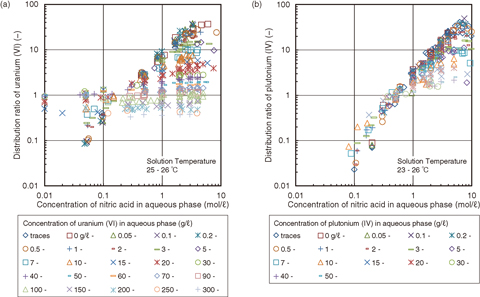
Fig.4-21 Summary of distribution ratios of (a) uranium (VI) and (b) plutonium (IV) in nitric acid/30vol% tributylphosphate-hydrocarbon diluent system
PUREX is well-known as a reprocessing method for spent nuclear fuel discharged from nuclear power plants. In Rokkasho-mura, a large reprocessing plant is now being prepared to start commercial operation.
In the reprocessing of high burn-up fuel or spent mixed-oxides fuel, which is anticipated in the near future, large amounts of fission products and plutonium would complicate the process; therefore, we have to investigate the influences of several processes, such as fuel dissolution, solvent extraction, and high-level liquid waste (HLLW) treatment.
We published the 1st and 2nd editions of the “Handbook on Process and Chemistry of Nuclear Fuel Reprocessing” in 2001 and 2008, respectively. They included results from literature surveys and PUREX experiments conducted in the Nuclear Fuel Cycle Safety Engineering Research Facility (NUCEF) of JAEA. In March 2015, the 3rd edition was published, aiming at improved reliability and greater usefulness. On the editing committee, specialists in reprocessing from domestic universities, industry, and JAEA discussed the usefulness of this book, especially for students and young researchers and engineers.
In this edition, we have summarized more technical information from a careful literature survey and lessons learned from the recent nuclear accident; we have also included some properties of radioactive materials for the estimation of processes in the abnormal state.
In the opening section, an outline of PUREX is inserted as assistance to beginners. More information is also incorporated, for example, on the compositions of solid depositions, undissolved residue, and HLLW, as well as the volatility of some compounds and the flash points of organic solvents at high temperature, distribution ratios in solvent extraction of uranium (VI) and plutonium (IV) (Fig.4-21), and experimental results in fast reactor fuel reprocessing.
Huge technical knowledge and operational experiences in aqueous reprocessing have been accumulated in the world. We think it is important that they be transmitted steadily to the next generation for promoting the nuclear fuel cycle. It is expected that this handbook will be widely utilized for future research and development.